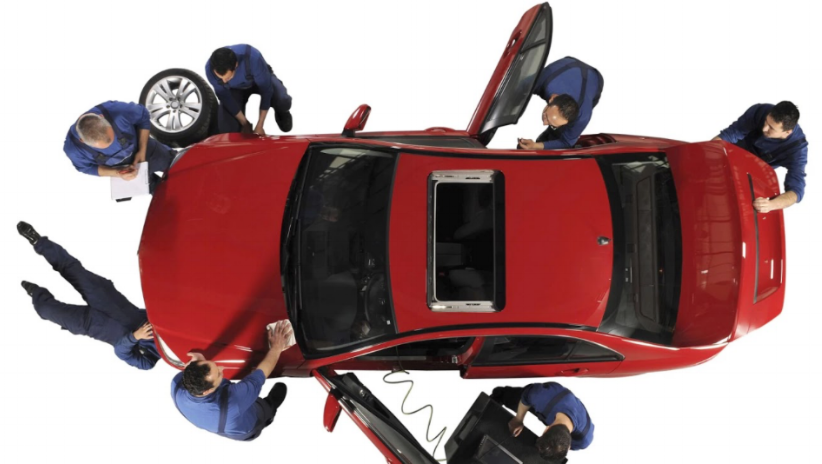
Even with all the advances in technology, one of the most integral parts of keeping your fleet on the road is a strict set of vehicle checks, before and after each trip.
Technology is wonderful (we love it), but there are some things that only humans can ensure get done properly – even if they use some cool gadgets to do so. Thorough vehicle inspections are one of the most important processes that any fleet manager can implement. Whether your fleet consists of a handful of panel vans, or hundreds of long-haul trucks, pre-and post-trip inspections form part of your daily operations.
The detail of these inspections will vary depending on the types of vehicles, as well as what they’re used for. Fleet managers need to adapt these checklists (see this excellent example from the Automobile Associations) to ensure the best possible care for their vehicles, but there are a few universal checks that apply to most fleet types.
-
Tyres
We’ve mentioned the importance of tyre maintenance many times, and that’s quite simply because it’s one of the basic things that either make or break your fleet (literally and figuratively). Before and after each trip tyres should be checked for:
-
Cuts, nails, stones, or anything that could cause a puncture or damage that can result in a puncture in the future.
-
Tyre pressure: by checking the tyre pressure after a trip you you’ll be able to catch any slow leaks or punctures. If one or more of your vehicle’s tyres have lost a significant amount of pressure during the trip, it probably means you have a slow leak. The tyre should be repaired (if possible) or replaced immediately.
Checking tyre pressure before a trip is just as crucial, because the incorrect tyre pressure can result in increased fuel consumption.
-
Tyre tread – before each trip you need to ensure your tyre tread is still in good condition. The exact specs vary depending on the tyres, but checking the treads basically means you’re making sure the depth of the grooves in the tyre ‘pattern’ (tread) are still deep enough to provide maximum traction.
Checking tyre tread after a trip is just as important, as you can identify which tyres need to be replaced before the next journey. The wear on tyre tread could also be a good indication of whether you may need to relook specific routes. Some routes can cause tyres to wear down very quickly due to poor road conditions, and could be a big help in identifying where you can further optimise your fleet.
-
Windscreen
Checking the vehicle windscreen should be standard practice before and after each trip. Small chips or cracks can quickly turn into a much bigger problem, which is the last thing you want in the middle of a journey. Making it standard practice for windscreens to be checked before and after each trip creates good fleet maintenance habits.
Part of the windscreen check should be to make sure the wipers are in good working order and that they are not worn down. Effective windscreen wipers are a safety-critical element of any vehicle fleet.
-
Lights
All vehicle lights should be checked. Not only to ensure they’re in good working order, but also to check for any chips, cracks or collection of moisture in the light coverings. Including this in your pre-, as well as post-trip inspection list will noticeably reduce your chances of light failures whilst out on the road.
-
Liquids
Depending on the type of vehicle (some batteries can only have battery water checked at the dealership), the level of all critical liquids should be checked before and after each trip. This includes fuel, water, oil, battery water (if applicable), and coolant. The exact list will be determined by the fleet manager depending on the type of vehicles on the fleet.
A big mistake is not including a liquid check in your post-inspection list, as the amount used during a single journey can quickly indicate if there are any leaks, or other reasons why a specific vehicle is not running as efficiently as possible. You’ll pick up problems much sooner if all liquids are checked before and after each journey.
-
Cabin condition
By doing regular checks of the interior, fleet managers can ensure their vehicles remain in the best condition possible. A cabin check can include the following:
-
Condition of all materials including seats and dashboard plastics
-
Steering wheel and handbrake
-
Driver display (are all lights functioning?)
-
Any telemetry systems that have been installed
By doing an interior overview check, fleet managers can identify which drivers take the best care of vehicles (and those who don’t) and be able to address any concerns before they become a drain on fleet operations.
All fleets will need checklists tailored to their specific needs, but most should include the five main points mentioned above. By creating a structure where doing pre-and post-trip vehicle inspections is mandatory, fleet managers can keep their fleets running as smoothly as possible b picking up any concerns before they become bigger (and costlier) problems.

